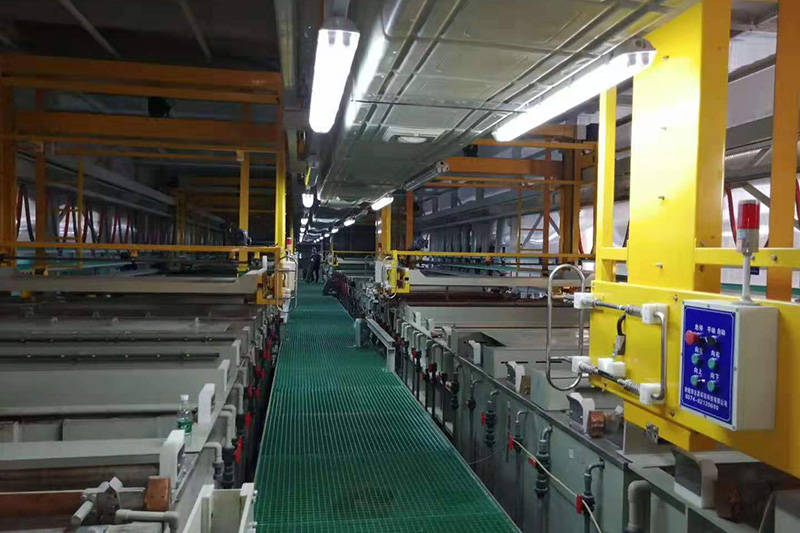The electroplating equipment adopts a highly efficient continuous electroplating production method. The high-speed automatic electroplating line has the following characteristics: it is suitable for the characteristics of small-sized and large-batch plated parts in the IC industry. The plating speed can generally reach 78m/min; the automation level is high, the control is accurate, and the impact of human factors on product quality is reduced. It can be produced continuously for 24 hours; the coating quality is high, and the most important plating type is tin or tin alloy, which can meet special requirements such as solderability, conductivity, and consistency. Each plating tank of the electroplating equipment is equipped with rectifiers, heaters, filters, cathode movement and other peripherals according to process requirements. In order to realize automatic assembly line operation, the conservative electroplating process adopts the hanging plating method.
The hanging plating line consists of a series of plating tanks arranged in a specific order. The hanging plating production line is equipped with several cranes. The driving route of the hanging plating line requires a special and complex calculation method. In actual operation, various unexpected conditions must be prevented, and the production process cannot be switched at will; the hanging plating line requires manual binding of the sheet to the hanger with copper wire, and each production line requires multiple operators to perform loading and unloading work.
Therefore, the radical hanging plating line has problems such as backward technology, low production capacity, serious pollution to the environment and personnel, poor electroplating quality, and low pass rate. The electroplating tank system of the electroplating equipment adopts a mother-and-child tank structure, that is, a conveying device and an electroplating tank system. The high-speed automatic electroplating line generally consists of two parts. The solution in the mother tank is pumped to the child tank, where the pre-treatment, electroplating, cleaning and other processes are completed on the material sheet, and the solution flows back from the child tank to the mother tank. This cycle is repeated to ensure the continuous progress of the electroplating process; the conveying device adopts a ring design, using a steel belt transmission structure and an automatic loading and unloading system to immerse the material sheet in the plating tank of each station in turn.

